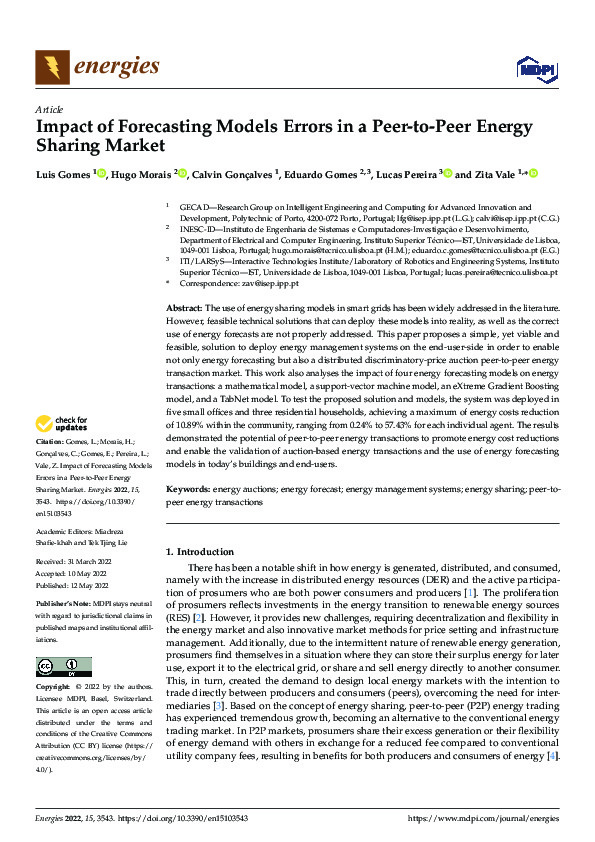Impact of Forecasting Models Errors in a Peer-to-Peer Energy Sharing Market
Abstract
The use of energy sharing models in smart grids has been widely addressed in the literature. However, feasible technical solutions that can deploy these models into reality, as well as the correct use of energy forecasts are not properly addressed. This paper proposes a simple, yet viable and feasible, solution to deploy energy management systems on the end-user-side in order to enable not only energy forecasting but also a distributed discriminatory-price auction peer-to-peer energy transaction market. This work also analyses the impact of four energy forecasting models on energy transactions: a mathematical model, a support vector machine model, an eXtreme Gradient Boosting model, and a TabNet model. To test the proposed solution and models, the system was deployed in five small offices and three residential households, achieving a maximum energy costs reduction of 10.89% within the community, ranging from 0.24% to 57.43% for each individual agent. The results demonstrated the potential of peer-to-peer energy transactions to promote energy cost reductions and enable the validation of auction-based energy transactions and the use of energy forecasting models in today’s buildings and end-users.

